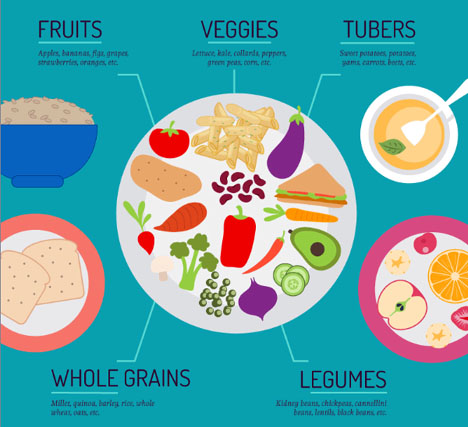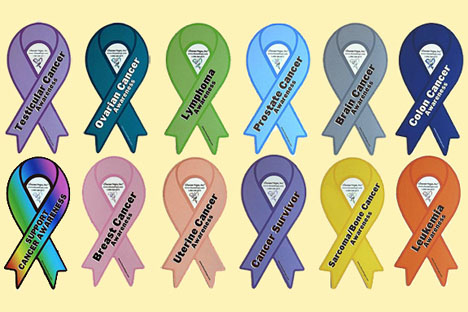
Plant-based eating patterns continue to soar in popularity and a group of nutrition researchers outline the science behind this sustainable trend in a review paper, entitled “Cardiometabolic benefits of plant-based diets,” which appears as an online advance in Nutrients. The review will publish in a future special edition, entitled “The Science of Vegetarian Nutrition and Health.”
The review outlines how a plant-based diet, which is naturally low in calories, saturated fat, and cholesterol, and rich in nutrients, like fiber and antioxidants, could be one tool, in addition to adopting a healthful lifestyle, used to improve nutrition intake and reduce the risk of heart disease, stroke, obesity, and type 2 diabetes.
The authors, Hana Kahleova, Susan Levin, and Neal Barnard analyzed clinical research studies and reviews published until May 2017. Their research finds a plant-based diet, built around vegetables, fruits, whole grains, and legumes, can improve nutrient intake and help manage body weight and glycemic control, improve cholesterol, lower blood pressure, and reverse atherosclerosis, or the narrowing of the arteries caused by the accumulation of arterial plaque.
“The future of health care starts on our plates,” says Dr. Kahleova, the lead study author and the director of clinical research at the nonprofit Physicians Committee. “The science clearly shows food is medicine, which is a powerful message for physicians to pass on to their patients and for policymakers to consider as they propose modifications for health care reform and discuss potential amendment to the 2018 Farm Bill.”
To understand the health benefits of a plant-based diet, the researchers analyze its structure:
Fiber
Fiber contributes to bulk in the diet without adding digestible calories, thus leading to satiety and weight loss. Additionally, soluble fiber binds with bile acids in the small intestines, which helps reduce cholesterol and stabilize blood sugar.
Plant-Based Rx: Aim to eat at least 35 grams of dietary fiber a day. The average American consumes 16 grams of dietary fiber each day.
Fats
Plant-based diets are lower in saturated fat and dietary cholesterol. Replacing saturated fats with polyunsaturated and monounsaturated fats can decrease insulin sensitivity, a risk factor for metabolic syndrome and type 2 diabetes.
Plant-Based Rx: Swap meat and dairy products, oils, and high-fat processed foods for smaller portions of plant staples, like a few avocado slices or a small handful of nuts and seeds, which are rich in polyunsaturated and monounsaturated fats.
Plant Protein
Vegetable proteins reduce the concentrations of blood lipids, reduce the risk of obesity and cardiovascular disease, and may have anti-inflammatory and anti-cancer effects.
Plant-Based Rx: Legumes, or lentils, beans, and peas, are naturally rich in protein and fiber. Try topping leafy green salads with lentils, black beans, edamame, or chickpeas.
Plant Sterols
Plant sterols that have a structure similar to that of cholesterol reduce cardiovascular disease risk and mortality, have anti-inflammatory effects, and positively affect coagulation, platelet function and endothelial function, which helps reduce blood clots, increases blood flow, and stabilizes glycemic control in patients with type 2 diabetes.
Plant-Based Rx: Consume a high intake of antioxidants and micronutrients, including plant sterols, from whole plant foods, like vegetables, fruits, grains, nuts, beans, and seeds. A plant-based diet supports cardio-metabolic benefits through several independent mechanisms. The synergistic effect of whole plant foods may be greater than a mere additional effect of eating isolated nutrients.
“To make significant health changes, we have to make significant diet changes,” concludes Dr. Kahleova. “A colorful plant-based diet works well for anyone, whether you’re an athlete looking to boost energy, performance, and recovery by enabling a higher efficiency of blood flow, which equates to oxygen conversion, or if you’re a physician who wants to help patients lose extra weight, lower blood pressure, and improve their cholesterol.”
Dr. Kahleova and the study authors recommend using a plant-based diet as an effective tool to treat and prevent cardiometaoblic disease, which they would like to see promoted through future dietary guidelines and nutrition policy recommendations.
Source: Medical News Today
Filed under: Food, Health, News and Articles | Tagged: Plant-based Diet | Comments Off on Review: Cardiometabolic Health Benefits of a Plant-based Diet















